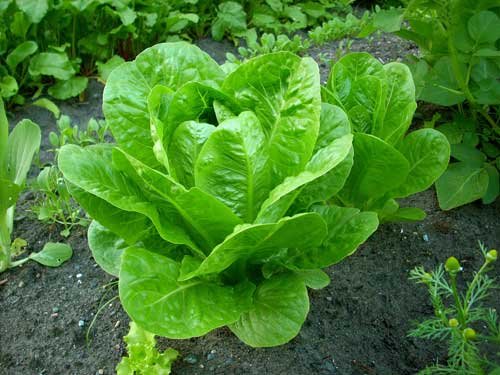Today, lettuce makes up 25 percent of America's fresh vegetable consumption, second only to the potato. The average American eats about 30 pounds of lettuce every year! Compared to cultures around the world, however, we're sadly lacking in imagination when it comes to culinary uses of this humble vegetable.
Take a closer look at whole, fresh lettuce, available right now from local farms and maybe even your own garden. You'll find lettuce varieties with strong, inpidual personalities. Its vibrant beauty will offer an artistic element to the simplest salads and, yes, lettuce can make itself at home in more places than the salad bowl. The myriad of refreshing and cooling lettuce varieties we know today have developed over the centuries, since the ancient Egyptians cultivated its wild, bitter cousin thousands of years ago.
Lettuce carries a milky sap containing an opiate-like substance in its veins. In fact, the Egyptians and Romans finished their meals with a salad to lull them off to sleep. As a strange disconnect, it's interesting that the Egyptians also considered lettuce to be an aphrodisiac, so go figure. Legend has it that, if you seriously over-indulge in lettuce that's gone to seed, you could end up in a coma. Not to worry, though: That bolted lettuce will taste so bitter, nobody's likely to make the mistake of eating too much. Eating normal quantities of fresh lettuce has never put anyone into a coma, anyway.
The trusted friend of dieters over the ages, lettuce is famously low in calories and high in fiber. It's also rich in folic acid and both vitamins A and C. Dark and vibrant color with greens in general signifies more nutrients, including the all-important anti-oxidants, so choose your lettuce accordingly.
In recent years, bagged, washed lettuce mixes have become standard fare in the produce aisle of the grocery store, making it simpler than ever to keep a bag of fresh greens on hand for an impromptu salad. Convenience always comes with a price, however. That bagged lettuce, most likely having traveled to New England from the West Coast, has been washed in bleach to ensure freshness over a longer period of time. As a result, it's notoriously lacking in flavor.
Look for local lettuce that's bright and healthy looking, perky (not wilted) and with no signs of decay or discoloring. Treat it carefully when you get it home; it's best to store lettuce in the crisper drawer, unwashed, wrapped in paper towels in a plastic bag. If prewashing increases your chance of actually using it, you can break this rule by washing the whole leaves as soon as you bring your lettuce home. Just store it damp (almost dry) in an airtight container in the refrigerator and use it within a day or two. Be aware that lettuce holds up better torn, rather than cut.
Beyond using lettuce in sandwiches or an endless variety of summer salads, why not think outside the bowl? It's delicious barely cooked in light soups or as a fresh wrap for hot, spicy fillings. In China and Japan, it's common to use crispy lettuce in a stir fry; the trick is making sure the oil is very hot, cooking it quickly to maintain its crispness and bright color. Google “lettuce wraps” for plenty of ideas for Asian dishes wrapping lettuce around hot, savory fillings. Be creative, though. Cooking with someone else's recipe is fun; creating your own is even better.
If you choose to use your lettuce in a salad, dress it up with your personal style, complementing each variety's texture and flavor with simple, impromptu dressings. Passing up bottled salad dressings and making your own is easy, nutritious and will save money. Fine, fragile lettuces and baby greens are best dressed in light dressings, like a simple vinaigrette. Olive oil with fresh lemon juice is a reliable dressing for dark leaves like romaine, whereas the sweet, mild flavor of iceburg lettuce comes alive with the sharpness of a rich, homemade blue cheese dressing. Experiment and pay attention to flavors. As with cooking adventures in general, just jump in, be creative and make only enough for one meal. You can always change it up next time.
Most of all, have fun trying different lettuce varieties and celebrating the bounty of New Hampshire farms this summer. With more than eighty summer farmers markets happening around the state, it's easier than ever to enjoy produce from local farms.
Eleanor Baron lives, gardens, cooks and writes in Concord, and stalks area farmers markets for fresh, in-season produce. Visit her blog at nourishingwords.net for more ideas and inspiration on incorporating healthy habits into your life.




















